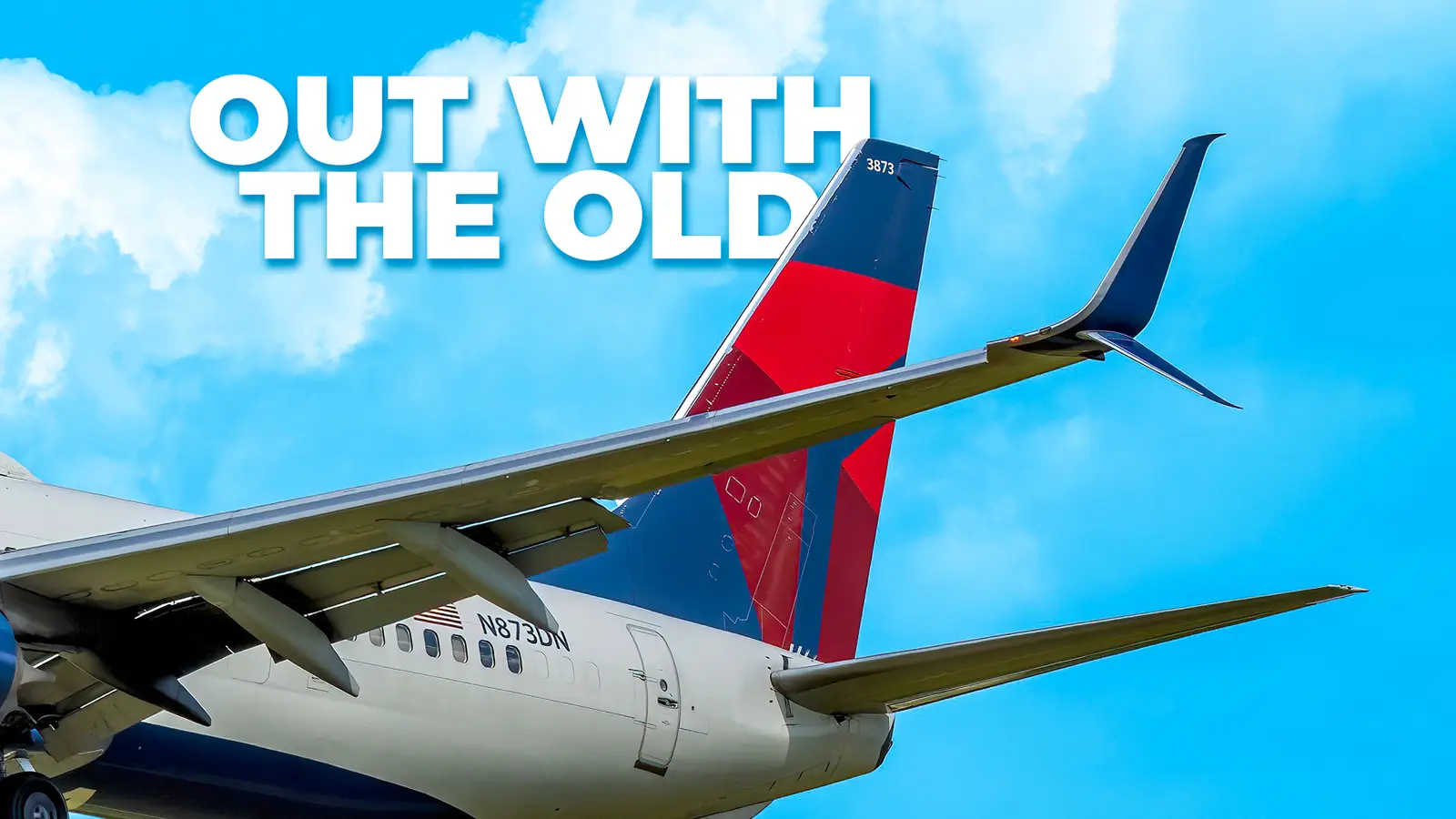
The industry is under constant pressure to become more efficient and sustainable. Rising fuel costs and tighter environmental targets have pushed airlines to adopt innovations that cut fuel consumption without compromising performance. In response, manufacturers have introduced new-generation engines, lighter materials, and advanced aerodynamics to meet these demands.
Winglets, those upward or split extensions at the wingtips, are another innovation that has become a standard feature. They reduce drag by weakening the vortices created at the tip of the wing, which in turn allows the aircraft to fly the same distance with less fuel. They are now standard on most new aircraft and are increasingly retrofitted to older fleets. Delta Air Lines is one of several major carriers that has invested heavily in this technology to improve fuel efficiency across its narrowbody operations.
The Physics Behind Winglets And Where The Idea Came From
But how do these winglets work? The physics behind them is simple. As air moves across a wing, the pressure difference between its upper and lower surfaces generates lift. However, at the tips, this imbalance causes air to spiral upward and backward, creating vortices. These vortices produce induced drag, which reduces efficiency and forces the aircraft to burn more fuel. Winglets disrupt this flow. Their vertical or split shape weakens the vortex and allows the wing to generate the same lift with less drag. This leads to lower fuel consumption, extended range, and more efficient performance on long sectors.
The concept is not new; it dates back more than a century. In 1897, British aerodynamicist Frederick Lanchester suggested adding vertical tip surfaces, called endplates, to reduce energy loss. They were not especially effective, but the principle was established. Decades later, in the 1970s, NASA engineer Richard Whitcomb advanced the idea with a curved extension inspired by the way birds angle their feathers in flight. The design was tested on a modified Boeing KC-135, and it proved effective: 47 test flights showed fuel savings of up to 5% without requiring major structural changes to the wing.
The business jet manufacturer Learjet became the first to bring winglets to production aircraft in 1977. Later in the late 1980s, the technology spread to commercial fleets when the Boeing 747-400 entered service with canted winglets. From then on, both manufacturers and aftermarket specialists refined the concept. Aviation Partners, in particular, drove adoption across Boeing’s narrowbody and mid-size widebody aircraft.
Delta’s Early Commitment To Blended Winglets
Over the decades, wingtip modifications have taken many forms. Each new design reflected advances in aerodynamics and a clearer understanding of how airflow behaves at high speeds. As previously mentioned, early efforts included flat vertical endplates, and then a major breakthrough came with canted winglets, which were angled outward and upward from the wingtip. They were first introduced on the Boeing 747-400 and soon became a familiar feature on widebodies such as the Airbus A330 and A340.
The next step forward was the blended winglet, which featured a smooth, curved transition between the wing and the winglet. This design further reduced interference drag and improved airflow continuity. It quickly became one of the most widely adopted modifications, especially across Boeing’s 737, 757, and 767 families. Delta Air Lines was among the earliest major carriers to embrace this technology. In 2007, the airline announced plans to install blended winglets on more than 60 Boeing 737NG, 757-200, and 767-300ER aircraft.
At the time, then Chief Operating Officer Jim Whitehurst noted that the upgrades would deliver at least a 3.5% reduction in fuel burn and a minimum 5% increase in range. Delta eventually equipped most of its 737-800 and 737-900ER aircraft with blended winglets, along with large parts of its 757-200, 757-300, and 767-300ER fleets. The SkyTeam member’s 737-700s also featured blended winglets, though the type was retired during the COVID-19 pandemic, one aircraft in March 2020, and the remaining nine later that September.
Delta Is Moving Away From Blended Winglets In Favor Of Split Scimitars
By the mid-2010s, Delta had started turning its attention to the upgraded option: the split scimitar winglet. This design added a downward-facing ventral fin beneath the tip to weaken the vortex from both directions. The result was even higher drag reduction and improved fuel performance. The modification was adopted widely across 737 Next Generation aircraft, particularly by operators with high-frequency domestic networks where efficiency gains quickly multiplied.
Delta first placed an order in 2014 for 70 firm and 30 optional 737-900ER split scimitar winglet systems from Aviation Partners Boeing (APB), the joint venture between Boeing and Aviation Partners responsible for developing the technology. Four years later, it added another 60 systems for the same variant. More recently, in 2022, the airline announced plans to extend the retrofit to its fleet of 737-800s. APB’s records show that Delta had actually placed orders in 2021 for 77 shipsets for the -800 and an additional 29 for the -900ER.
According to ch-aviation, the carrier currently operates a fleet of 77 737-800s and 163 -900ERs. Indeed, it had already gained measurable benefits from blended winglets, but the split scimitar proved more effective. Therefore, the airline is now phasing out the older design in favor of the newer system to maximize efficiency across its narrowbody fleet.
Blended Vs Split Scimitar: What’s The Difference?
As previously noted, blended winglets introduced a smoother transition where the wing meets the winglet. The design used a large radius curve to keep airflow continuous, which reduced turbulence at the tip and avoided concentrated vortices that create drag. Aviation Partners notes that this approach made blended winglets more than 60% effective compared with earlier angular designs.
The split scimitar winglet is built on that foundation. However, instead of just a single upward curve, it added a downward-angled lower fin and reshaped the tip of the existing blended structure. This adjustment attacked the vortex from both directions and further reduced drag. In practical terms, it improved the efficiency of the original blended winglet by around 2%.
According to Aviation Partners, blended winglets deliver fuel savings of roughly 3.3% per aircraft, while the split scimitar can push that figure to as much as 5.5%. The difference may seem marginal at first glance, but across hundreds of aircraft and thousands of annual flights, the gains translate into significant fuel savings and lower emissions.
Delta’s 737 MAX 10 Fleet Will Feature Boeing’s AT Winglets
Indeed, for Delta, the investment in winglets will ultimately translate into cost savings. But the next question is what comes next. The airline currently holds an order for 100 Boeing 737 MAX 10s, the largest member of the MAX family. As we know, certification of the type has been repeatedly delayed, and the manufacturer is not expecting to get it certified until next year. That said, once delivered, these aircraft will arrive with an updated winglet design that closely resembles the split scimitar.
Unlike the blended base of the NG series, the MAX features what Boeing calls the Advanced Technology (AT) winglet. This split-tip design combines an upward and downward extension with a much sharper angle at the tip. Boeing claims the configuration reduces fuel burn by about 2% by more efficiently redirecting the vortices created at the wingtip. Additionally, the AT winglet goes further with Natural Laminar Flow (NLF) surfaces and specialized coatings that help maintain smooth airflow.
This minimizes skin-friction drag and avoids turbulence along the surface of the winglet. The split-up-and-down arrangement manages vortices more effectively than a single large blade, while avoiding the structural penalties that would come with extending the span. For Delta, the MAX’s winglets will represent the next generation of efficiency gains beyond the split scimitars now being installed on its NG fleet.
Winglets Will Remain A Key Part Of Delta’s Fleet Strategy
Winglets have gone from experimental add-ons to a defining feature of modern commercial aircraft. Each new generation has built on earlier lessons and has brought incremental but meaningful improvements in performance and fuel efficiency. Today, multiple designs can be found across the industry, including blended winglets, split scimitars, raked tips, folding variants, and Airbus’ sharklets.
Without any change to the fuselage or engines, operators have been able to gain measurable performance boosts that extract more value from existing airframes. Delta has followed the same path. The airline embraced blended winglets for its narrowbodies as a way to improve efficiency, and it is now moving away from that design in favor of the more effective split scimitar winglets. The decision reflects a focus on securing even more fuel savings and operational benefits, especially across its high-frequency 737 operations.



